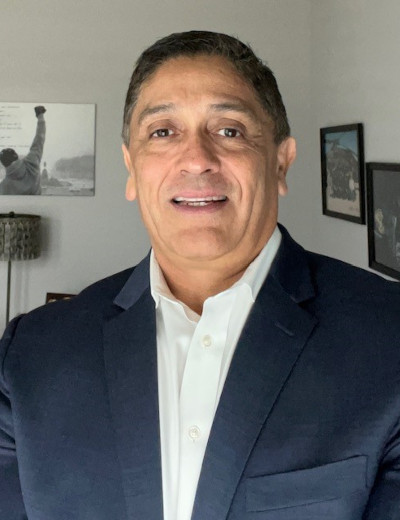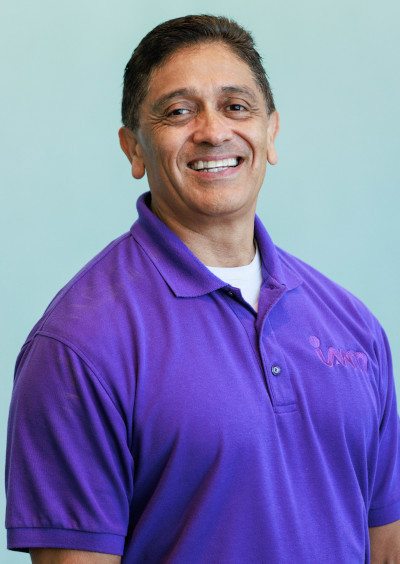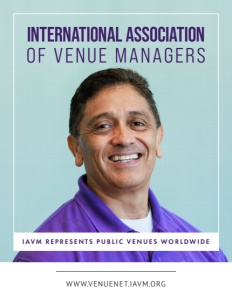International Association of Venue Managers (IAVM)
IAVM represents public venues worldwide
International Association of Venue Managers ensures safety
COPPELL, TEXAS—With security at major venues more important than ever before, the International Association of Venue Managers has a critical part to play in maintaining the safety of the general public. Around the world, the IAVM is working to ensure the safety and security of countless such venues.

Mark Herrera
We recently spoke with IAVM Director of Education Mark Herrera. A seasoned law-enforcement officer and trainer, with stints including SWAT team membership and more, Herrera is also a veteran of the United States Department of Homeland Security. He told us more about the IAVM’s mission and its important role in this modern era of heightened security awareness. The nonprofit association represents public-assembly venues from a wide variety of nations.
“The mission of the IAVM is to educate and advocate,” says Herrera, “to inspire public assembly professionals.”
He says the group’s worldwide members include professional managers and senior executives that represent all the different venue types. This includes auditoriums, arenas, convention centers, exhibit halls, stadiums, centers for the performing arts, university complexes and theatres: venues both publicly and privately owned.
“These are the facilities and venues that we know attract millions of patrons and a variety of events,” says Herrera, “from small to medium to large mass gathering events of every different event time, concerts, professional sports and more.”
He continues that strong collaborative efforts help the IAVM represent not only managers and partner companies in all venues but also planners, organizers and service contractors.
“We have a strong presence with the Department of Homeland Security,” he adds, “to assure that all provide best practices and enhanced safety and security to protect the mass gatherings.”
Much experience
Herrera’s professional background uniquely qualifies him to do what he does with the International Association of Venue Managers, flying around the world to help ensure the greater safety of countless venues.
“I was able to leverage my heavy security background to really accommodate and bridge all the capability gaps within the venue industry,” he shares. “The background comes from working special operations within the law-enforcement community. I did that for 20-plus years and moved to Dallas to work for the Department of Homeland Security. My job here was to train our personnel on how to regain control of hijacked aircraft and how to prevent air piracy. As their defensive tactics instructor and their firearms instructor, I also did all of the behavioral-indication training for all of those that are trained to protect all aircraft, all commercial airlines. When I left the DHS, after doing that, my focus within the IAVM was to really build a resilient team within all of the big facilities and to build a resilient security culture.”
He began with situational-awareness training and active-shooter training; the de-escalation strategies and techniques for frontline teams and the proper use of tools used in building resilient security cultures; and the ever-evolving threat landscape that America and the Western world currently face.
“The whole purpose there was to recognize the value of facilities, which is really paramount for fostering a thriving, connected event,” says Herrera, adding that keeping staffers safe is just as important as ensuring the safety of venue attendees.
Security lapses are certainly bad for venues, their people and their revenue in especial and bad for the wider economy more broadly. Striving to avoid this and make security as airtight as possible is a big part of Herrera’s impressive skill set.
“That’s not to say that there will never be crisis in a facility,” he emphasizes. “Let’s just say we better do our due diligence in front of it, to add those layers of security that the facility needs to mitigate against any and all risks. That means a robust security is what has been one of the IAVM focal points, to avert the potential financial setback that I just mentioned.
“Ensuring the security and safety and avoiding potential legal pitfalls and the associated financial reputation damage is critical,” he adds. “We wanted to do this also as part of leveraging that background and running it through the IAVM educational programming part of it.”
Top-notch training
 Herrera says IAVM annual conferences offer a lot of this educational training. There are staff committees present with professional members that represent all facets of the large venue industry, all of them prepared to drive home the latest in security measures. Also present are members of federal agencies; those from the hospitality and retail sectors; local, state and regional authorities; and media outlets.
Herrera says IAVM annual conferences offer a lot of this educational training. There are staff committees present with professional members that represent all facets of the large venue industry, all of them prepared to drive home the latest in security measures. Also present are members of federal agencies; those from the hospitality and retail sectors; local, state and regional authorities; and media outlets.
“It’s important that we promote what I call inclusivity,” he says, adding, “A secure environment can draw a really diverse crowd, and you want people from various backgrounds and demographics to feel safe. It’s going to foster that inclusivity, and it’s going to enrich the event. It’s going to promote that global community.
“We encourage the collaboration,” he adds, “because we think that builds on the reputation and the partnerships that we need for these vendors to continue their commitment to securing those facilities.”
Given the nature of Herrera’s job and the IAVM’s work, it’s important not to give away too much. Herrera walks a fine line here between education and information versus the security-related need for a certain circumspection.
“One of the things that we focus on is a unified security approach,” he says, “when all the vendors or facilities within a community adopt our standardized security training programs, ensuring that everyone is on the same page concerning those. What are those best-practice protocols that really measure out the effects and mitigate risks? The purpose is to reduce that confusion and increase the effectiveness during a potential crisis. That’s what we’re trying to focus on. I call it ‘closing the gap’: when you perceive a threat from the point of perception to the point that you have to take action. There’s a time delay, and there’s a gap to respond to a certain condition. It’s about taking the guesswork out of what has to do with those facilities. It’s about implementing the proper technologies and the tools that they need.”
Herrera stresses that team-engagement is crucial, from leadership all the way down to frontline staffers.
They are, he continues, “those eyes and ears, boots on the ground; underpaid, sometimes undervalued and overlooked. Yet they can be the most important assets, because they see things before anyone else does. If you can’t engage your frontline staff to be a part of that security culture, it does leadership no good at that point, and it compromises that facility and those attendees.”
Addressing hazards and mitigating risks are what it’s all about, Herrera notes.
“What can we do better to mitigate that risk?” he rhetorically asks. “Or what is the more viable option to identify the vulnerability and mitigate the risk and measure it out to make sure that it works?”
Enhanced preparedness is another vital facet. Teams must be trained to look beyond the traditional security measures, as Herrera informs.
“It’s about understanding behavioral patterns,” he says. “It’s about pushing your buffer zone out, being able to meet and greet guests before they ever make it into the facility. I can identify the behavioral patterns that are not conducive to the environment, that lead a reasonably prudent person to believe that the activity might be suspicious. I can interject at that point and remove potentially threatening actors, but I’ve got to train my team on what to look for with regard to behavioral indicators and how to interject. I use what is called a ‘guest service approach’ to mitigate the risk.
“In other words,” he adds, “if I see unusual behavior, how do I confront it? The best way to confront anything that could be potentially unusual—that is reasonably suspicious in nature—is through a guest service approach. I may be wrong in the assessment, but I’m never going be wrong in the approach when I approach it from a guest service perspective that allows me that approach. That initial contact allows me to identify the behavioral indicators that individual is displaying. Either he belongs there, or he doesn’t. Based on his behavior and my approach, I’m going be able to determine that fairly quickly.”
You can never underestimate the importance of vigilance and preparedness, Herrera emphasizes.
“Awareness belongs to everyone,” he says. “It is no longer tasked for one individual that has that designated role—the director of security—to monitor the entire operation. It’s incumbent upon everyone, every employee and every other key stakeholder and partner that’s a part of that event, whether you’re a meeting planner, an organizer or a service contractor. Everyone has a say in identifying and mitigating risk.”
AT A GLANCE
The International Association of Venue Managers
What: a global nonprofit association representing public-assembly venues
Where: headquartered in Coppell, Texas
Website: www. venuenet.iavm.org

